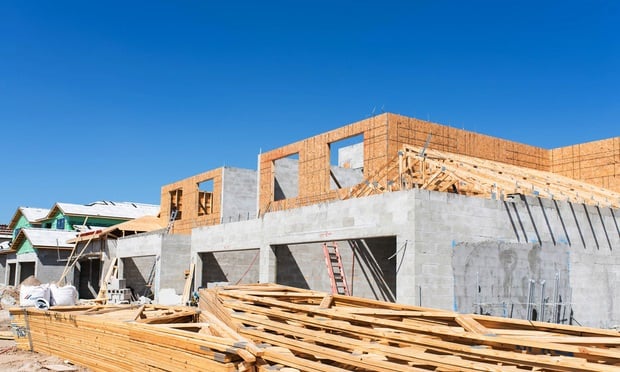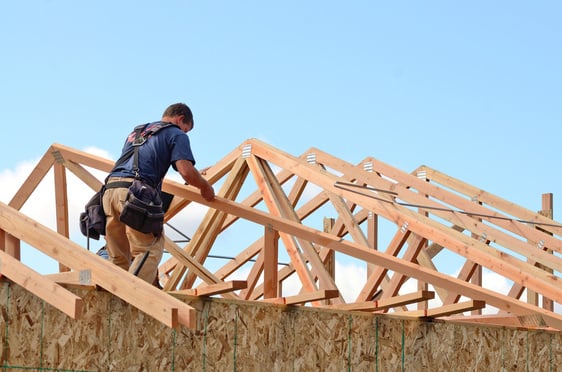How will the office market evolve in the future?
That is the question Globest.com asked numerous sources as we continue GlobeSt.com's 15th anniversary coverage, with a focus on office this week. Some of their answers may surprise you…and feel free to comment below with your own thoughts.
The views expressed in the commentary below are the author's own.
“Although we can expect some future corrections in our economy, the shift in how tenants use space and want space to be designed will survive. The fundamental desire for tenants to use space in a more open and collaborative way is here to stay.”
—Chris Strickfaden, senior managing director at Newmark Grubb Knight Frank.
“We need to design and develop more sustainable, timeless, and environmentally sensitive projects that will be more desirable to the millennial-dominated workforce and also be more valuable assets than traditional/old school office projects. The best office developments will be mixed-use projects that celebrate food, entertainment, hospitality, culture, pets, kids, activities, community, and authenticity.”
—Russ Parker, co-managing partner, Parker Properties
“The power of the user to determine their individual working space will continue to be a huge driver in the future, serving to create empowering spaces that people want to be in. These workspaces will also serve as a recruiting and retaining tool for the next generation of workers to thrive in. The continued spread of instant communication technologies like social media, Skype, and FaceTime will only continue to grow, meaning that 'space' has to be more reactive and agile as ever. There will never be one size fits all again.”
—Jacqueline Barr, design principal at Ted Moudis Associates
“We have seen a strong shift in both how tenants view office space and what owners and buyers of office property are looking to invest in—this demand will only increase in future years. And, this isn't going to be limited to certain industry sectors … law firms, financial companies and other traditional users are already making the transition to offices designed with more dynamic and collaborative spaces. A lot of owners with traditional office buildings will continue to scramble to see how they can modify their space for both user experience in common areas as well as individual space. As capital is spent to do that, there will also be an expectation for higher rental rates.”
—Chris A. Strickfaden, senior managing director in the El Segundo, CA office of Newmark Grubb Knight Frank.
“The office space of the future will continue today's trend … it will be more open, feature energy efficiency and sustainability, offer more interactive spaces, and line of sight with employees. There will also be more teamwork versus silos. Hoteling will also thrive in the future with sectors such as accounting, law, and commercial real estate, as well as sales and tech firms where employees are out in the field or working remotely a good percentage of their time. This will be a strategy to reduce office space requirements. An employee will come into office, plug in and connect at any workstation and conduct business as needed.
We will see a couple key trends that are currently in play continuing into the future. First, the use of office space will become even more efficient with less square footage per person especially in major markets such as New York City, San Francisco and West Los Angeles. This will be largely due to increasing rental rates. Designers will continue to re-work office space to make it more usable to ensure that all space is being maximized. Currently states and Federal agencies have varying standards of 85- to 250-square-feet per employee as well to be taken into consideration.
Second, we will see even more prevalent office expansion in major urban markets due to the millennial employee workforce, which is one that overwhelmingly seeks to live, work, and play all in one local area versus commuting from suburbs or working in suburbs.”
—Jonathan Larsen, principal and managing director of Avison Young
“The office market will continue to evolve with the technology advancements that will continue to put pressure on maintaining historical employment levels for traditional professions. New business models for existing professions will continue to transform space and use requirements. The stock brokerage tenant is one such example; brokerages with online-trading models such as Scottrade are viable alternatives to Merrill Lynch and similar traditional brokerage houses. The appetite of investment capital for office buildings in the short term will continue to increase quoted rental rates, which will make it harder to achieve proforma rents that exceed current market rents.”
—Bill Boyd, senior managing director in the Glendale, CA-office of Charles Dunn Co.
“Increased space efficiency has its limits. While the C-suite loves the efficiencies, rank and file employees are not always as enthusiastic.
It will be interesting to see where the happy medium between efficiency and quality of work environment is. If space efficiency is taken to an extreme, offering more generous work environments may become a competitive advantage in the pursuit of talent causing the pendulum to reverse direction. What we do know is that the rate of space reduction is already leveling off.
In the future, T/M/I will still drive demand, but with different effects. For example, picture a not-to-distant world where holograms become cost effective and meetings occur in a virtual room requiring no physical meeting space. On the other hand, countering this is today's reality that the more technology allows us to interact virtually the more valuable physical interactions may become. This alone, will make physical spaces where face-to-face business interactions can happen that much more in demand.
Millennials are influencing demand for CBD space today, and that may continue over the coming generation, despite the realities of household formation, kids, and other expenses that traditionally drive them to the suburbs. My best guess is that they won't follow their parent's pattern of moving 45 miles outside of the city-center, but may find middle ground in the close-in metro adjacent neighborhood with convenient transit facilities. If that is the case, then the 20-30 minute train ride should support continued demand for CBD office space.”
—Chris Macke, managing director Research & Strategy at American Realty Advisors
Continue Reading for Free
Register and gain access to:
- Breaking commercial real estate news and analysis, on-site and via our newsletters and custom alerts
- Educational webcasts, white papers, and ebooks from industry thought leaders
- Critical coverage of the property casualty insurance and financial advisory markets on our other ALM sites, PropertyCasualty360 and ThinkAdvisor
Already have an account? Sign In Now
© 2024 ALM Global, LLC, All Rights Reserved. Request academic re-use from www.copyright.com. All other uses, submit a request to [email protected]. For more information visit Asset & Logo Licensing.








